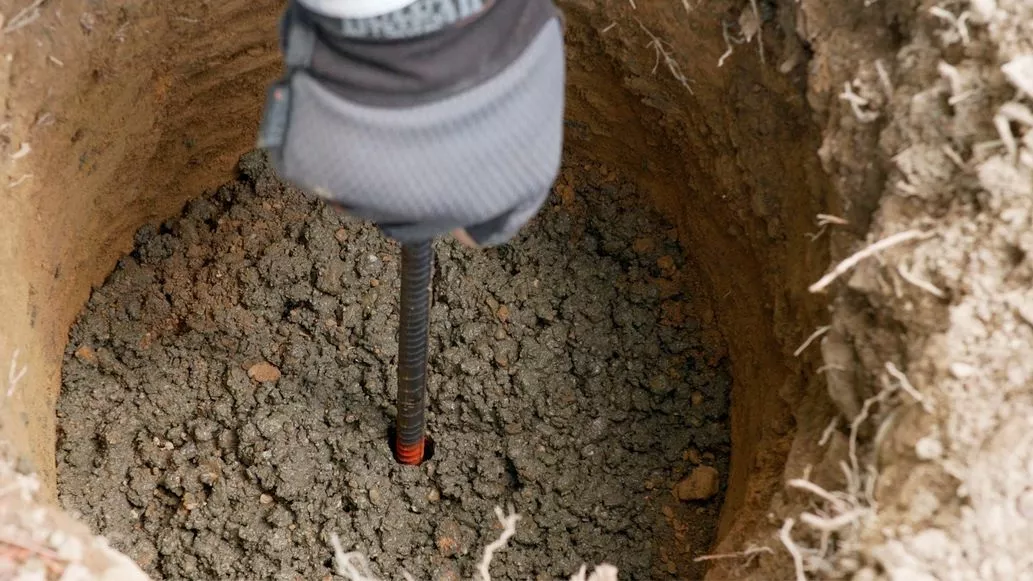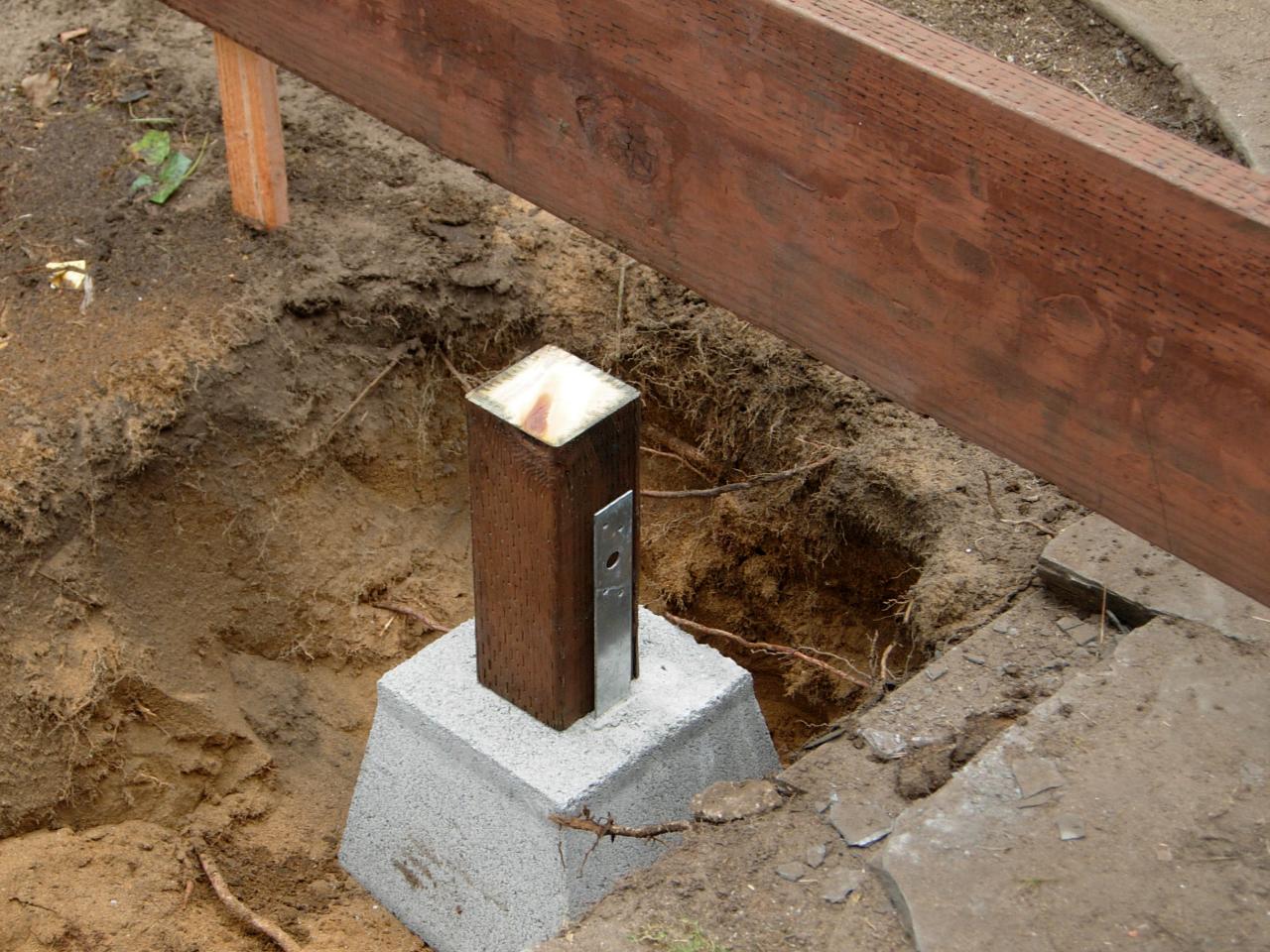Picking the Right Deck Footings for Security and Sturdiness
The longevity and safety and security of your deck depend greatly on the type of footings you choose, as they give the vital assistance and stability to stand up to the test of time. In this conversation, we will certainly explore the various kinds of deck footings, take into consideration the important elements to consider when making a decision, and dig into the pros and disadvantages of various choices.
Types of Deck Grounds
These grounds are composed of a round opening filled up with concrete, which offers a solid foundation for the deck messages. Concrete pier footings are reasonably simple to mount and offer exceptional security, making them a preferred selection for numerous deck tasks.
These footings are mounted by screwing them into the ground, which creates a safe structure for the deck. They additionally permit for simple modification and leveling of the deck if required.
Conversely, some contractors decide for precast concrete grounds. These grounds are made of resilient concrete and come in numerous shapes and sizes to accommodate different deck styles. Precast concrete footings are practical to install and supply a stable base for the deck framework.
Lastly, an additional choice is the post-in-anchor footing system. This kind of footing entails driving a steel support into the ground and attaching it to the deck post. It supplies adaptability in terms of placing the deck articles and is ideal for decks with light-weight structures.
When selecting the ideal sort of deck ground, it is crucial to consider aspects such as soil conditions, deck tons, and local building regulations (Deck Footings). Consulting with a specialist specialist or structural designer can aid make sure the proper ground is selected for a secure and stable deck
Factors to Consider When Picking Footings
When selecting the ideal footings for a deck, it is critical to carefully take into consideration various factors such as soil conditions, deck load, and adherence to regional building ordinance. These elements play a considerable function in guaranteeing the security and longevity of the deck framework.
The type of dirt on which the deck will be constructed determines the kind of grounds required. On the various other hand, decks developed on clay or extensive dirts might call for footings that can suit the soil's propensity to increase and contract.
One more important factor is the deck load. The weight of the deck, consisting of the products used and any kind of potential online loads such as furniture or gatherings, have to be considered when selecting grounds. The footings should be developed to birth the weight of the deck and disperse it evenly to stop any kind of structural issues or failures.
Finally, adherence to local building regulations is critical. Structure codes vary from region to region, and it is crucial to abide by the certain demands established by the local authorities. Deck Footings. These codes ensure that the deck is developed securely and fulfills the required requirements for structural honesty and load-bearing capacity
Concrete Grounds: Cons and pros

Concrete grounds use several advantages and drawbacks when used as the foundation for a deck. On the positive side, concrete grounds provide excellent stability and longevity.
An additional benefit of concrete grounds is their convenience. They can be put into various sizes and shapes to fit different deck designs and arrangements. Concrete grounds can be customized to fit browse around this web-site the specific requirements great post to read and requirements of the deck framework.
Nonetheless, there are likewise some downsides to utilizing concrete grounds. This can increase the overall price of the deck project and might need professional assistance.

Helical Piers Vs. Sonotubes: Which Is Better?
In taking into consideration the foundation alternatives for a deck, the comparison in between helical piers and sonotubes is vital in determining the remarkable choice. Helical piers, likewise referred to as screw piles, are steel shafts with helical plates connected to them. They are twisted right into the ground using hydraulic machinery, supplying a sturdy and secure structure for the deck. On the other hand, sonotubes are cylindrical kinds made from cardboard or fiber material that are loaded with concrete. They are put in an opening dug right into the ground and provide assistance for the deck.
The helical plates on the piers develop a solid grip with the soil, protecting against any activity or shifting of the deck. Sonotubes, on the various other hand, rely only on the concrete filling for security, which may not provide the exact same level of toughness and resistance.
In terms of installation, helical piers are reasonably much easier and faster to install compared to sonotubes. The hydraulic equipment utilized to turn the piers right into the ground makes certain a quick and effective process. Sonotubes, on the various other hand, call for excavating openings and pouring concrete, which can be labor-intensive and time-consuming.
Furthermore, helical piers are a more functional alternative. They can be used in different soil problems and can be adjusted or strengthened if needed. Sonotubes, on the other hand, might require additional assistance, such as rebar, in specific dirt problems or locations with high tons needs.
Picking the Right Footings for Your Deck's Dimensions
For ideal structural stability, it is vital to carefully select the ideal grounds that straighten with the dimensions of your deck. The measurements of your deck, including its size, width, and height, play a significant role in visit their website figuring out the kind and size of footings required.
When selecting grounds for your deck, it is essential to think about the load-bearing ability of the dirt. The weight of the deck, incorporated with the weight of any kind of furniture or individuals on it, applies a considerable pressure on the grounds (Deck Footings). It is essential to pick footings that can appropriately support this weight without sinking or moving over time.
The dimension and shape of the grounds need to also be taken into consideration. Larger decks with better dimensions call for bigger grounds to supply enough security and assistance. The shape of the grounds, whether they are square or rounded, relies on the design and design of the deck. Additionally, the deepness at which the grounds are set up ought to be established based on the frost line in your area to stop any type of heaving or shifting due to freezing temperatures.
Verdict
In final thought, selecting the appropriate deck grounds is vital for making certain security and longevity. Elements such as the kind of grounds, the deck's measurements, and the pros and cons of various choices ought to be considered.
These grounds are composed of a round hole loaded with concrete, which provides a strong structure for the deck messages. Concrete pier grounds are relatively easy to mount and provide excellent security, making them a popular choice for many deck tasks.
Precast concrete grounds are practical to install and provide a steady base for the deck framework.
It offers adaptability in terms of placing the deck posts and is appropriate for decks with lightweight structures.
Concrete footings supply a number of benefits and disadvantages when utilized as the structure for a deck.